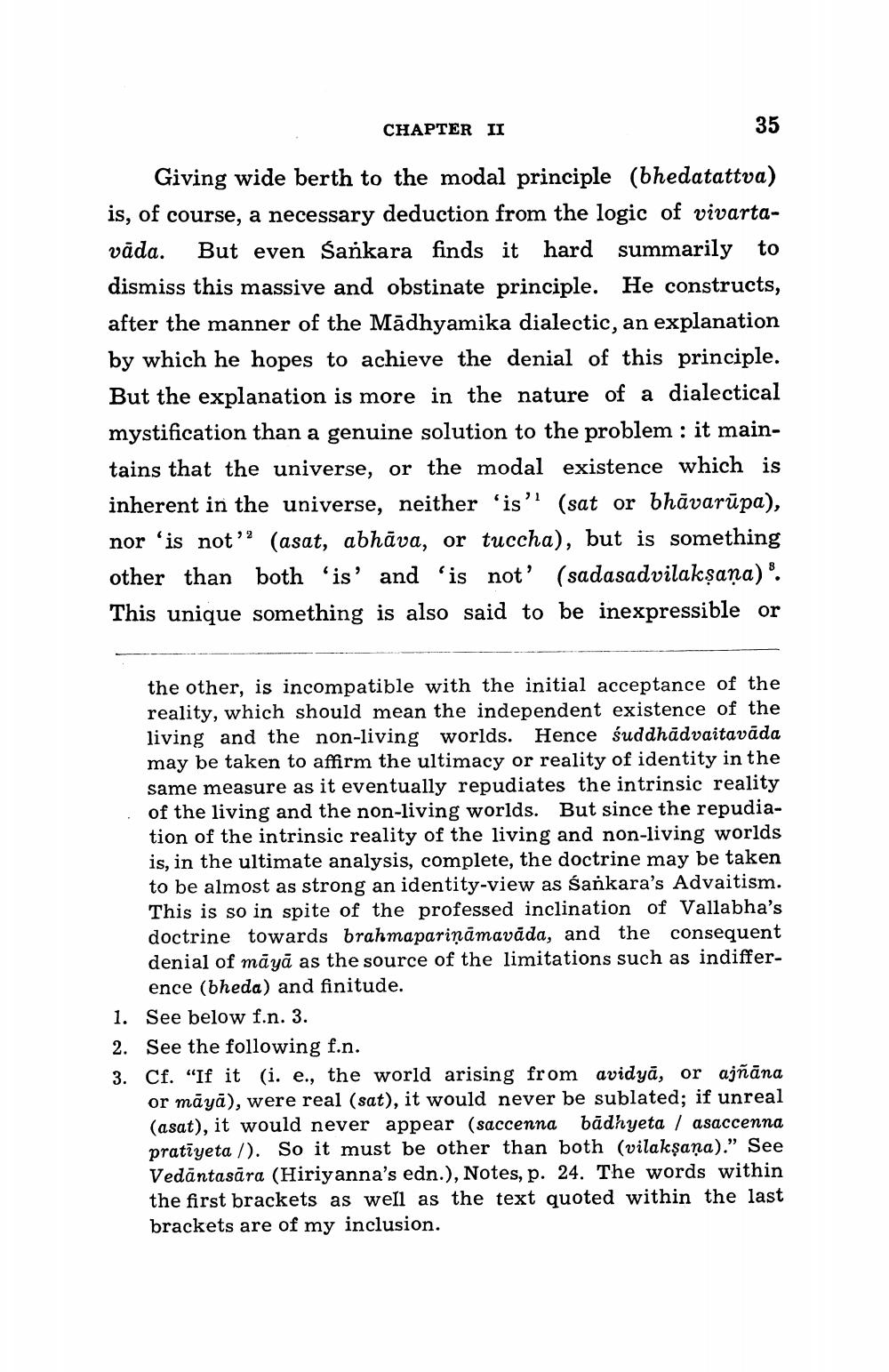________________
CHAPTER II
35
Giving wide berth to the modal principle (bhedatattva) is, of course, a necessary deduction from the logic of vivartavāda. But even Sankara finds it hard summarily to dismiss this massive and obstinate principle. He constructs, after the manner of the Madhyamika dialectic, an explanation by which he hopes to achieve the denial of this principle. But the explanation is more in the nature of a dialectical mystification than a genuine solution to the problem : it maintains that the universe, or the model existence which is inherent in the universe, neither ‘is” (sat or bhāvarūpa), nor 'is not”? (asat, abhāva, or tuccha), but is something other than both 'is' and 'is not' (sadasadvilakṣaṇa). This unique something is also said to be inexpressible or
the other, is incompatible with the initial acceptance of the reality, which should mean the independent existence of the living and the non-living worlds. Hence śuddhädvaitavāda may be taken to affirm the ultimacy or reality of identity in the same measure as it eventually repudiates the intrinsic reality of the living and the non-living worlds. But since the repudiation of the intrinsic reality of the living and non-living worlds is, in the ultimate analysis, complete, the doctrine may be taken to be almost as strong an identity-view as śankara's Advaitism. This is so in spite of the professed inclination of Vallabha's doctrine towards brahmapariņāmavāda, and the consequent denial of māyā as the source of the limitations such as indiffer
ence (bheda) and finitude. 1. See below f.n. 3. 2. See the following f.n.
Cf. "If it (i. e., the world arising from avidyā, or ajñāna or māyā), were real (sat), it would never be sublated; if unreal (asat), it would never appear (saccenna badhyeta / asaccenna pratīyeta /). So it must be other than both (vilaksaņa)." See Vedāntasāra (Hiriyanna's edn.), Notes, p. 24. The words within the first brackets as well as the text quoted within the last brackets are of my inclusion.




